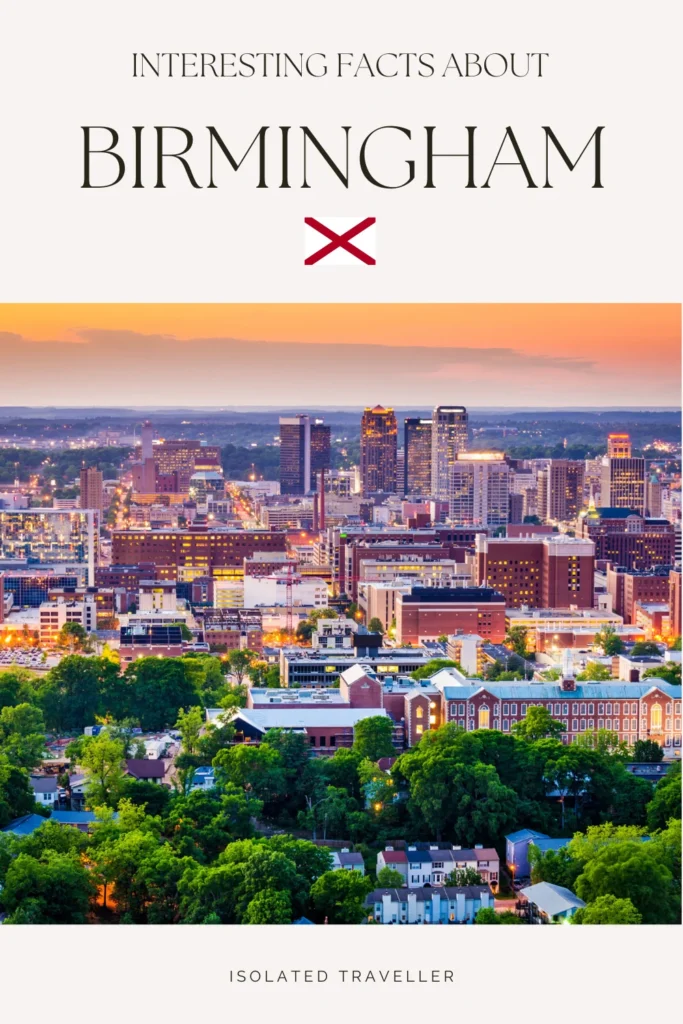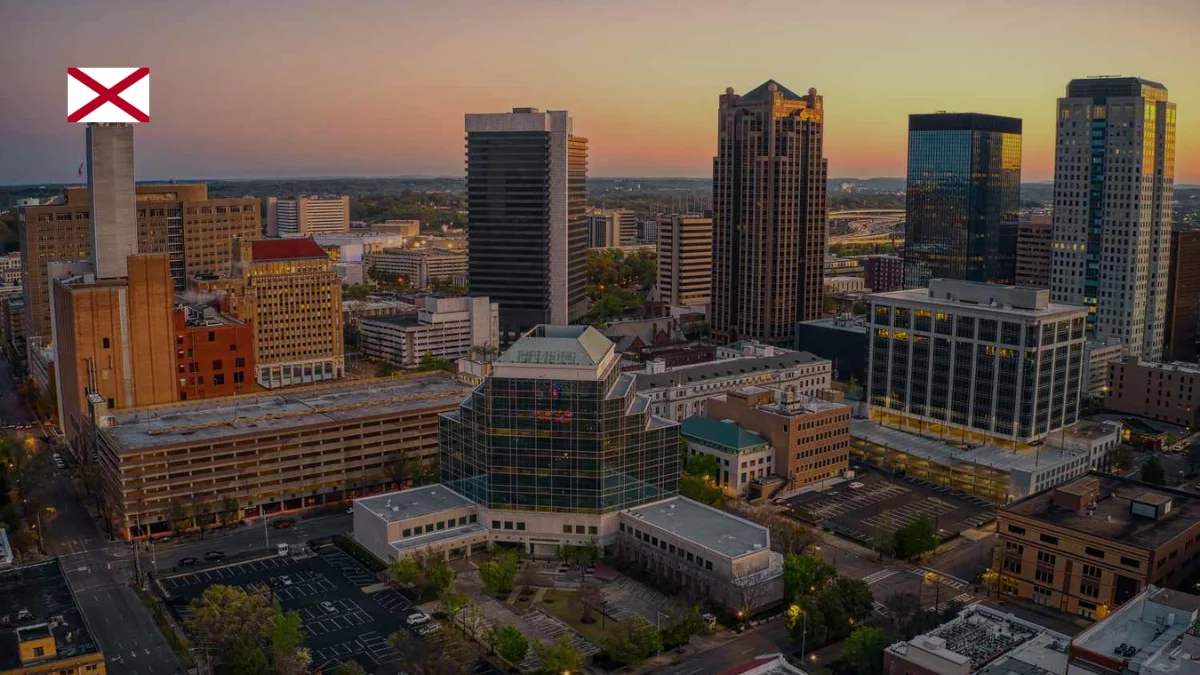Facts About Birmingham
Birmingham was founded on June 1, 1871, by the Elyton Land Company whose investors included cotton planters, bankers and railroad entrepreneurs, during the post–Civil War Reconstruction period.
Birmingham was named after Birmingham, England, the second city of England and one of the UK’s major industrial cities.
Birmingham played a pivotal role in the Civil Rights Movement of the 1960s. The Birmingham Campaign, led by Dr. Martin Luther King Jr., brought national attention to the struggle for civil rights.
In 1995, Mercedes Benz chose a site just west of Birmingham to build its first assembly plant outside Germany.
Birmingham boasts several cultural institutions, including the Birmingham Museum of Art, the Alabama Theatre, and the Birmingham Civil Rights Institute.
The oldest professional baseball field in the United States of America, Rickwood Field opened in 1910.
Birmingham hosts numerous annual events such as the Birmingham Greek Festival, Magic City Art Connection, and the Sidewalk Film Festival.
Birmingham is known as the founding city for the recognition of Veterans Day and hosts the nation’s oldest and largest Veterans Day celebration.
Birmingham has a crater named on the Moon, however, the lunar crater was actually named after the the astronomer John Birmingham.
Birmingham’s Sister Cities program is overseen by the Birmingham Sister Cities Commission; sister cities of Birmingham are; Hitachi, Japan; Székesfehérvár, Hungary; Anshan, China; Chaoyang District, Beijing, China; Krasnodon, Ukraine; Vinnytsia, Ukraine; Plzeň, Czech Republic; Guédiawaye, Senegal; Al-Karak, Jordan; Rosh HaAyin, Israel; Winneba, Ghana; Liverpool, United Kingdom; Kingston, Jamaica; Maebashi, Japan and Apaaso, Ghana.
The record high temperature in Birmingham is 107 °F, set on July 29, 1930, and the record low is −10 °F, set on February 13, 1899.
Red Mountain Park is a 1,500-acre public urban park situated in Birmingham, it’s the biggest urban park in the United States, around 40 per cent bigger than New York City’s Central Park.
Birmingham has a total area of 151.9 square miles, of which, 149.9 square miles is land and 2.0 square miles is water, According to the U.S. Census Bureau.
The University of Alabama at Birmingham’s Kirklin Clinic was designed by world-renowned architect I.M. Pei.
The estimated population of Birmingham is 196,910, as of 2022, making it the third-most populous city in Alabama after Huntsville and Montgomery.
The Birmingham Metropolitan area has an estimated population of 1,115,289 as of 2020, making it the largest metropolitan in Alabama and the 50th most populous in the United States of America.
Birmingham used to be the second largest streetcar city in the states after San Francisco, however By 1953, the last remnants of Birmingham’s streetcar fleet were sold to the Toronto Transit Commission in Canada and replaced by buses.
The Vulcan statue is the largest cast iron statue in the world and is the city symbol of Birmingham, Alabama.
Birmingham’s nickname “The Pittsburgh of the South” recalls the historical importance of the steel industry in both cities. Other Names that Birmingham is known as “the Magic City”, and the “Iron City”.


